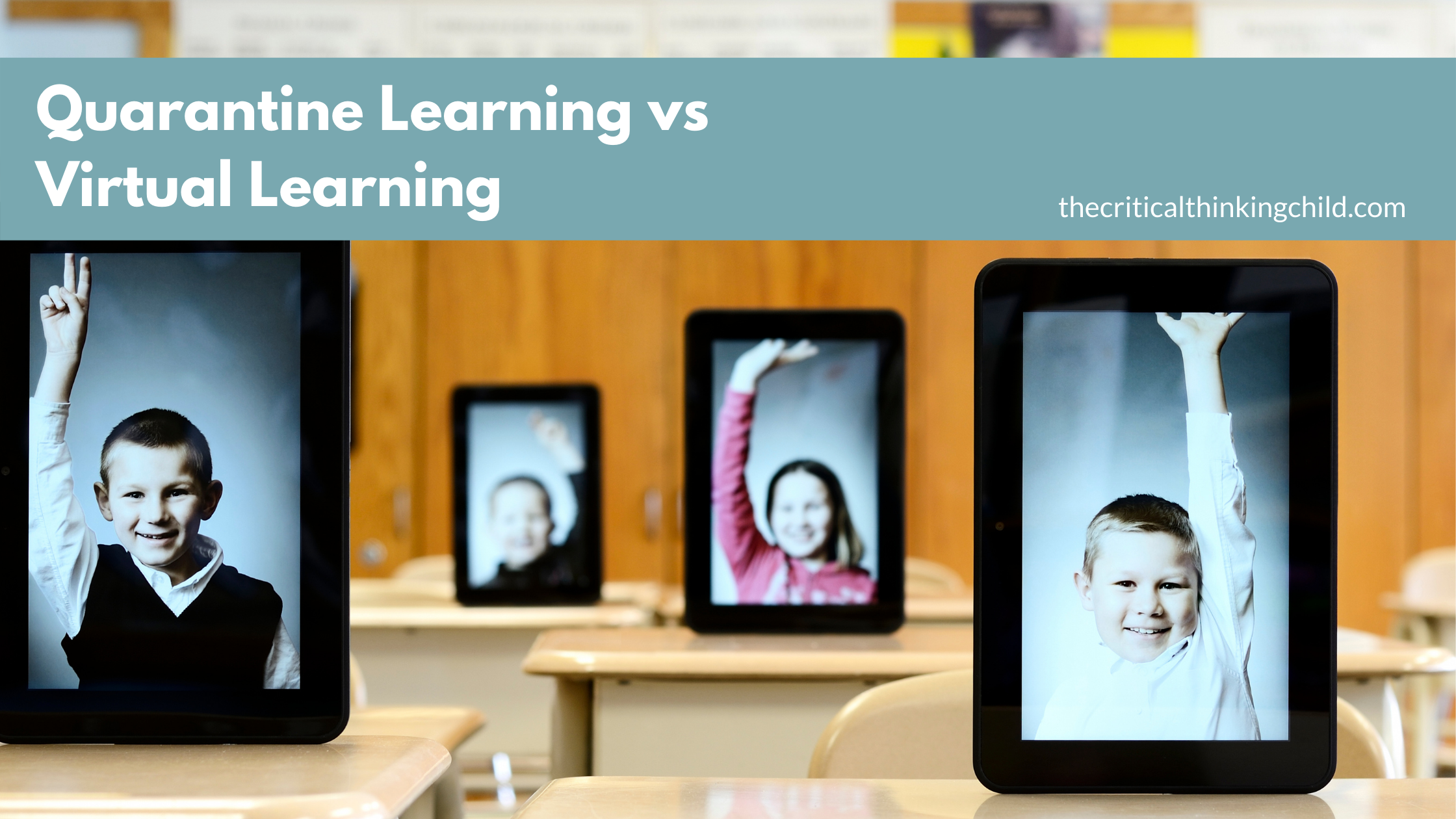Virtual learning is typically understood as remote learning from home for a long length of time, such as a semester or school year. During the 2020–2021 academic year, many families either opted for virtual learning, or their school districts mandated it for a portion of the year. Virtual learning has its share of difficulties, but often parents know ahead of time that it’s coming and can plan accordingly.
Conversely, quarantine learning happens when students are asked to be remote for 10-14 days and then return to their in-person learning setting. Typically this occurs because a student or class has experienced a COVID “close contact”—someone with a COVID diagnosis who has been within 6 feet of other people for longer than 15 minutes. Because young children are still unvaccinated, positive cases and exposures are happening frequently, forcing students into quarantine learning. These situations present new challenges for parents, who have to pivot at the last minute—most often on less than one day’s notice—adjusting their own schedules to work from home or arrange childcare. This inconsistency can also cause difficulties for students, who may struggle to gain momentum academically, feel motivated to learn from home, or even want to return to the classroom after quarantine.
Quarantine Learning Tips
Quarantine learning is pretty likely to happen to everyone this school year if it hasn’t already. So what can you do to make it go as smoothly as possible?
Make a childcare plan. It’s not possible to know exactly when you’ll be forced into quarantine learning, but one of the best things your family can do is make a basic plan ahead of time addressing childcare. Who will supervise your child? If nobody from your household is available, do you have a vaccinated extended family member or trusted babysitter that can stay home while your child is quarantined?
Have a designated learning space ready to go. You don’t need to leave it out 24/7, but it can be helpful to have a designated area for virtual learning—made easier if you did it last year! To supplement the space, have a “go-bag” ready with headphones, computer chargers, and other supplies so you’re not scrambling the first morning of quarantine learning.
Know what’s expected. Depending on the school or teacher, there may be different expectations for quarantine learning. It may be that your child’s entire class is quarantined and will be learning on Zoom, or it could be just your child and a few other classmates. In these situations, sometimes teachers only assign asynchronous work without any face-to-face instruction during the quarantine period. Be sure to ask your child’s teacher about the plan before a potential quarantine situation so you know what to expect.
Keep your routine as normal as possible. Quarantine is long—often longer than a typical school’s spring or winter break—so it can be hard for your child to transition back to the classroom after this extended time at home. To curb this as much as possible, try to keep your child on a normal school day schedule, even while at home. If they aren’t having Zoom classes, establish a set period of several hours each day that they’re expected to do school work, even if it’s just independent reading. This will keep some semblance of normalcy and make the return to the classroom easier when the time comes.
No matter what your quarantine situation, it always helps to plan ahead as much as possible. This will set your child and your whole family up for success!



